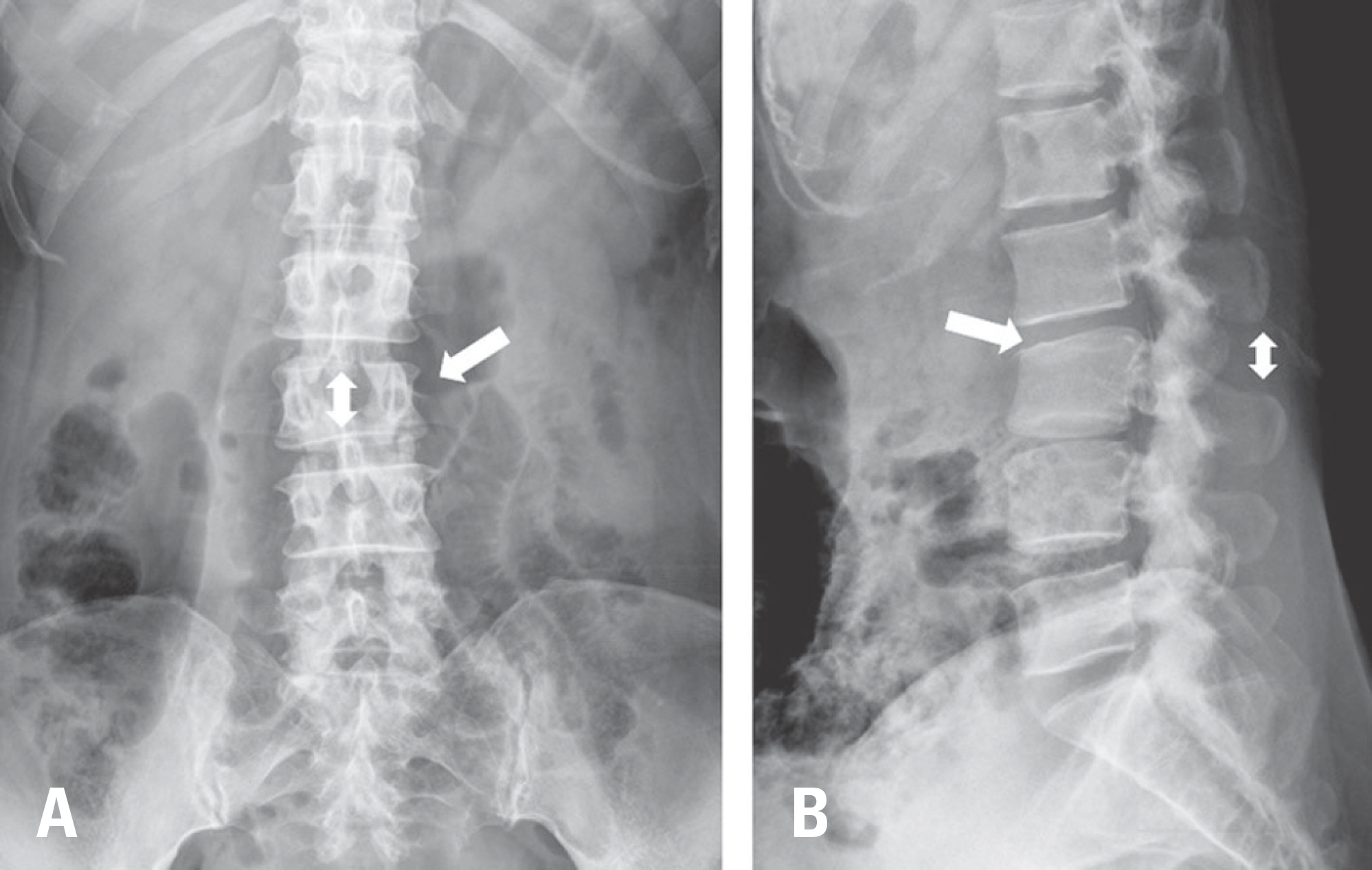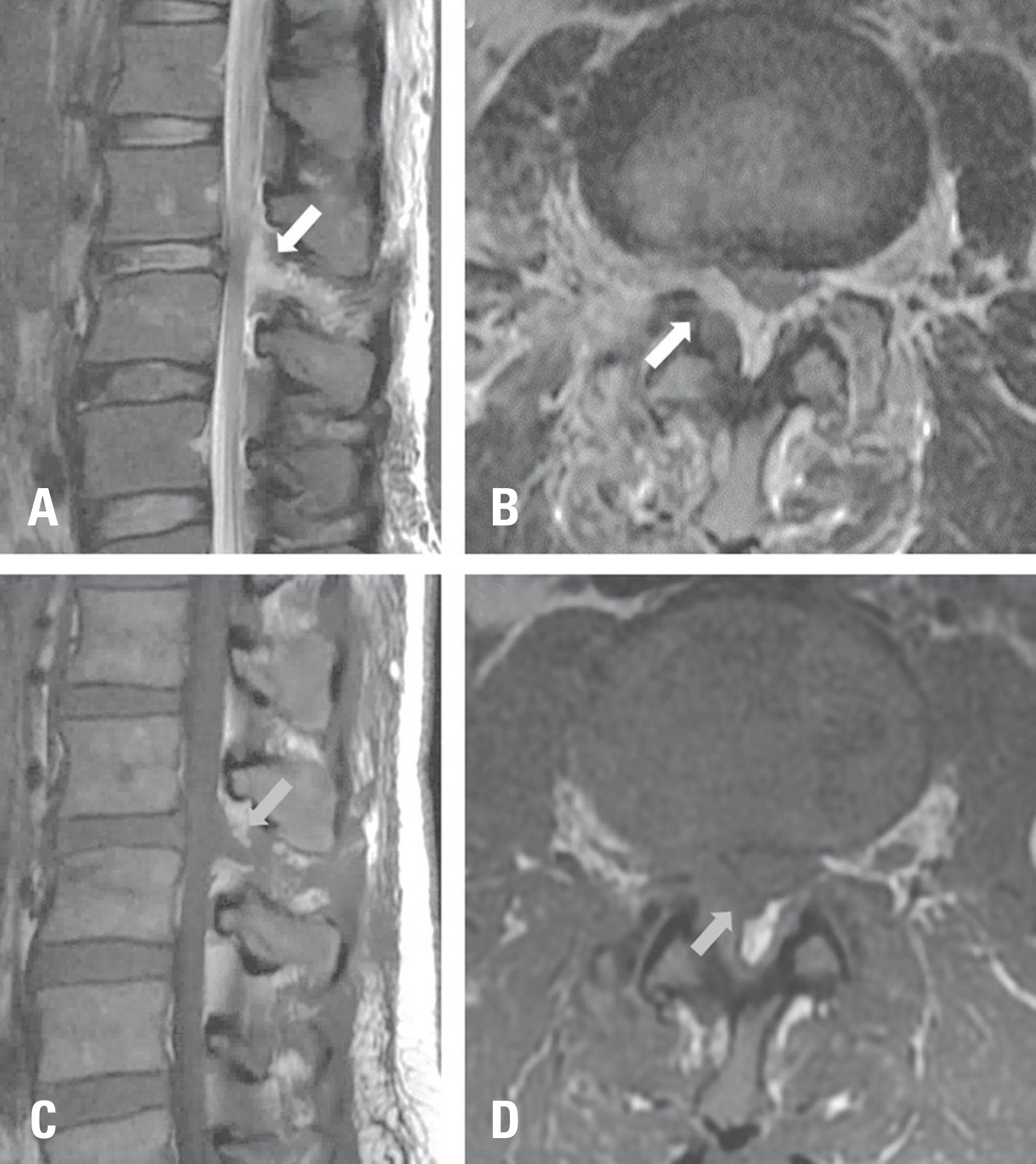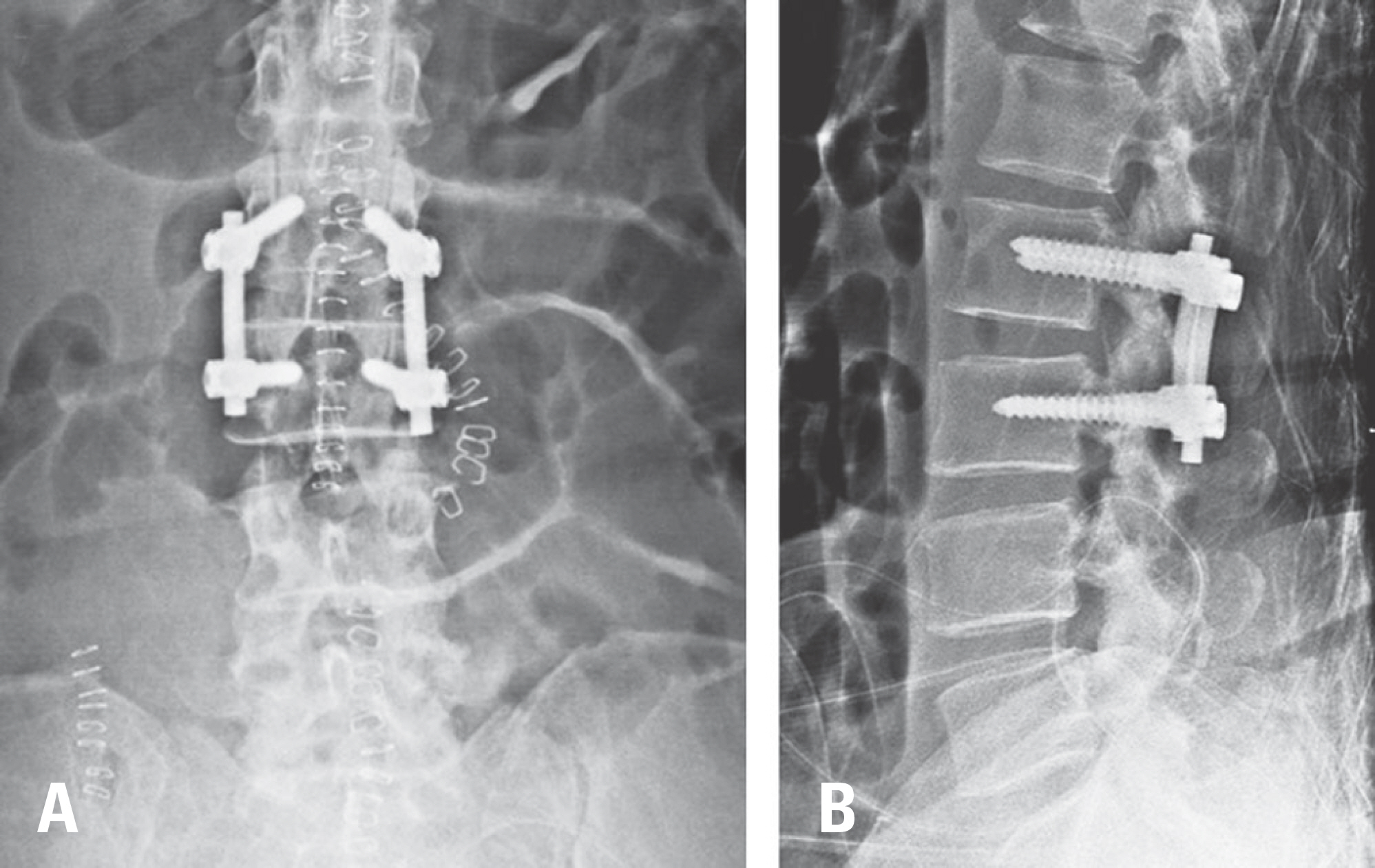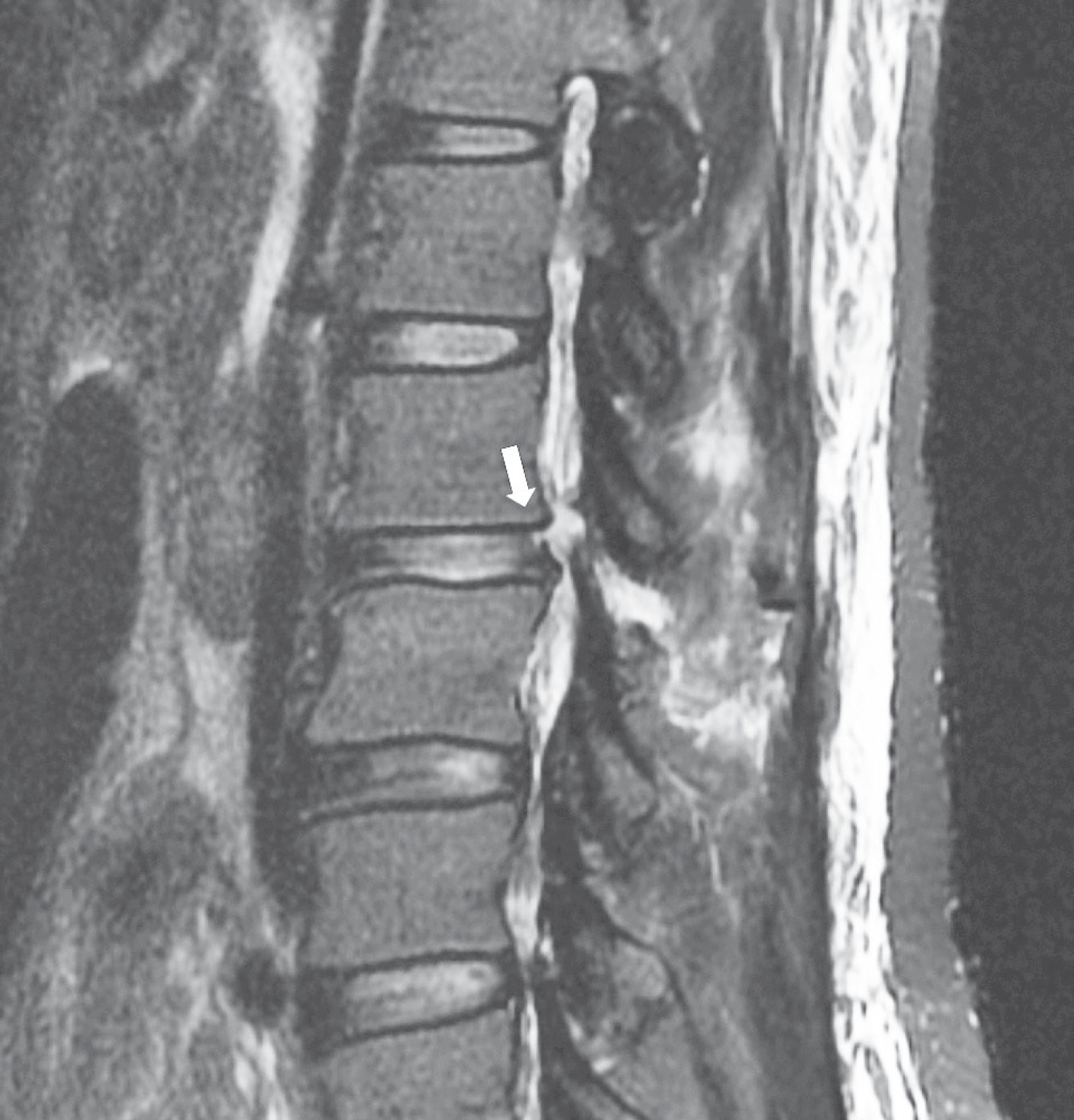J Korean Soc Spine Surg.
2019 Sep;26(3):105-110. 10.4184/jkss.2019.26.3.105.
Delayed-Onset Leg Weakness Caused by Posterior Migration of a Herniated Disc to the Thecal Sac Mimicking Epidural Hematoma in a Flexion-Distraction Injury of the Lumbar Spine: A Case Report
- Affiliations
-
- 1Department of Orthopaedic Surgery, Ajou University School of Medicine, Suwon, Republic of Korea. handonglee@gmail.com
- KMID: 2459760
- DOI: http://doi.org/10.4184/jkss.2019.26.3.105
Abstract
- STUDY DESIGN: Case report.
OBJECTIVES
To document the first known case of posterior migration of a herniated disc in a lumbar flexion-distraction injury. SUMMARY OF LITERATURE REVIEW: Lumbar disc herniation is sometimes confused with epidural hematoma, especially when the disc migrates posterior to the thecal sac. There has been no report of posterior migration of a herniated disc after a lumbar flexion-distraction injury.
MATERIALS AND METHODS
A 47-year-old woman with no pertinent medical history was diagnosed with a flexion-distraction injury of the L2-L3 vertebrae after a motor vehicle accident. The patient had no neurological deficit initially. Magnetic resonance imaging (MRI) showed a space-occupying lesion with T2 hyperintensity and T1 isointensity on the dorsal side of the thecal sac at L2-L3. After posterior lumbar fixation and fusion, progressive leg weakness occurred 1 week postoperatively.
RESULTS
A second operation revealed no evidence of epidural hematoma, but a sequestrated disc. Decompression and sequestrectomy were performed, and the patient's neurological status had recovered fully at 4 months postoperatively.
CONCLUSIONS
This case highlights the potential for posterior migration of a herniated disc with flexion-distraction injuries of the thoracolumbar spine. Discontinuity of the posterior annulus fibrosus on MRI may aid the distinction of posterior migration of a herniated disc from epidural hematoma. Because posterior migration of a herniated disc is associated with progressive neurological deficits, surgeons must consider decompression surgery when such herniation is suspected, even in the absence of neurological symptoms.
Keyword
MeSH Terms
Figure
Reference
-
1. Kim JH, Kim SH, Lee SK, et al. Traumatic lumbar disc herniation mimicking epidural hematoma: A case report and literature review. Medicine. 2019 May; 98(18):E15438. DOI: 10.1097/MD.0000000000015438.2. Roaf R. A study of the mechanics of spinal injuries. The Journal of Bone and Joint Surgery. British volume. 1960 Nov; 42:810–23. DOI: 10.1302/0301-620X.42B4.810.3. Jain N, Crouser N, Yu E. Lumbar intervertebral disc herniation masquerading as an epidural hematoma: A case report and review of the literature. JBJS case connector. 2018 Jul-Sep; 8(3):E59. DOI: 10.2106/JBJS.CC.17.00300.4. Dorsay T, Helms C. Mr imaging of epidural hematoma in the lumbar spine. Skeletal radiology. 2002 Dec; 31(12):677–85. DOI: 10.1007/s00256-002-0584-y.
Article5. Weinstein J, Lurie J, Tosteson T, et al. Surgical vs nonop-erative treatment for lumbar disk herniation: The spine patient outcomes research trial (sport) observational cohort. Jama. 2006 Nov; 296(20):2451–9. DOI: 10.1001/jama.296.20.2451k.6. Tamburrelli F, Meluzio M, Masci G, et al. Etiopathogenesis of traumatic spinal epidural hematoma. Neurospine. 2018 Mar; 15(1):101–7. DOI: 10.14245/ns.1834938.469.pp.
Article7. Akhaddar A, El-Asri A, Boucetta M. Posterior epidural migration of a lumbar disc fragment: A series of 6 cases: A review. Journal of Neurosurgery: Spine. 2011 Jul; 15(1):117–28. DOI: 10.3171/2011.3.SPINE10832.8. Elsharkawy A, Hagemann A, Klassen P. Posterior epidural migration of herniated lumbar disc fragment: A literature review. Neurosurgical review. 2019 Jan. 1-13. DOI: 10.1007/s10143-018-01065-1.
Article9. Lewis S, Amritanand R. Traumatic disc herniation following flexion-distraction injury of the thoracolumbar spine: A rare presentation. Journal of Trauma & Treatment. 2016 Jan; 5:293. DOI: 10.4172/2167-1222.1000293.
Article10. Finkelstein J, Wai E, Jackson S, et al. Single-level fixation of flexion distraction injuries. Clinical Spine Surgery. 2003 Jun; 16(3):236–42.
Article
- Full Text Links
- Actions
-
Cited
- CITED
-
- Close
- Share
- Similar articles
-
- Posterior Epidural Herniation of a Lumbar Disk Fragment at L2–3 That Mimicked an Epidural Hematoma
- A Case of Posterior Epidural Migration of an Extruded Lumbar Disc Fragment Causing Cauda Equina Syndrome
- Posterior Epidural Migration of Herniated Lumbar Intervertebral Disc: Two Cases Report
- Posterior Migration of Extruded Lumbar Disc Fragments
- Posterior Epidural Migration of Thoracic Disc Fragment







